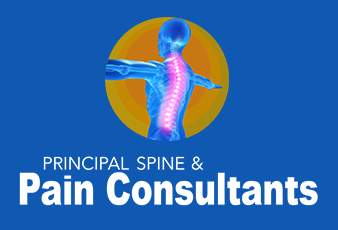
03 Oct Lower Back Pain When Sitting vs Standing — What It Really Means
Lower Back Pain When Sitting vs Standing — What It Really Means
If you experience chronic lower back pain, you know how even simple daily activities like driving or standing in line can become painful. The key to understanding your pain lies in how it behaves: does it get worse when you sit down or when you stand up?
These two patterns can point to very different causes. Pain that worsens when sitting often suggests nerve irritation, such as from a disc herniation. Pain that increases when standing or walking is more likely linked to spinal stenosis, a narrowing of the spinal canal. Other types of joint pain, such as facet joint or sacroiliac (SI) joint pain, can also make certain positions uncomfortable.
Understanding what triggers your pain helps your pain management specialist identify the actual cause and develop an effective, long-term plan.
1. When Pain Gets Worse While Sitting (The Nerve Problem)
If your back pain intensifies when sitting, bending forward, or twisting, the cause may be a disc herniation (a bulging or slipped disc) or pressure on a spinal nerve.
Why Sitting Hurts:
Your spine is cushioned by discs that act like shock absorbers. Sitting — especially in a slouched position — puts more pressure on those discs than standing. When a disc bulges or herniates, it can press against nearby nerves, leading to sharp, shooting pain that travels down one leg.
Common Symptoms:
- Radiating pain or “sciatica” that shoots down the back of one leg
- Numbness, tingling, or weakness in the leg or foot
- Pain that worsens when sitting or bending forward
- Relief when standing, walking, or lying down
How It’s Treated:
If your pain is caused by nerve inflammation, your doctor may recommend an Epidural Steroid Injection (ESI). This targeted procedure delivers anti-inflammatory medication directly to the affected nerve, helping to reduce swelling and create a window of relief that allows you to begin rehabilitation or physical therapy.
2. When Pain Gets Worse While Standing or Walking (The Canal Problem)
If you notice your back or leg pain gets worse when you stand for long periods or walk, and improves when you sit or lean forward, you may be dealing with spinal stenosis.
Why Standing Hurts:
Spinal stenosis occurs when the spinal canal narrows, typically due to age-related changes or arthritis. This narrowing puts pressure on the spinal cord or nerve roots. Standing or walking causes your spine to extend slightly backward, which further compresses the nerves, resulting in pain, cramping, or tingling.
Common Symptoms:
- Aching, cramping, or numbness in the lower back, buttocks, or legs
- Pain that worsens with standing or walking and improves when sitting or leaning forward
- Leg weakness or heaviness
Relief Tip:
Sitting or bending forward (like leaning on a shopping cart) can create a little extra space in the spinal canal, temporarily easing nerve pressure.
Your pain management doctor can evaluate the degree of narrowing using imaging studies and may recommend targeted treatments such as specialized injections or, in advanced cases, minimally invasive procedures to relieve pressure on the nerves.
3. When Pain Is Triggered by Changing Positions (The Joint Problem)
Not all back pain comes from nerves or the spinal canal. Sometimes, the issue lies in the small joints of the spine or pelvis. Pain that worsens when changing positions — such as sitting to standing — often indicates joint-related causes, including facet joint or SI joint dysfunction.
Facet Joint Pain
Why It Happens:
The facet joints are small joints in the spine that allow you to bend and twist. Like other joints, they can become irritated or inflamed due to arthritis or degeneration.
Symptoms:
- Pain that worsens when bending backward or twisting
- Stiffness after sitting for long periods (such as after a drive)
- Localized aching in the lower back
Relief:
Many patients feel better when leaning or bending forward. If your pain management doctor suspects facet joint pain, they may recommend a Facet Joint Injection. If this brings temporary relief, the next step may be Radiofrequency Ablation (RFA) — a minimally invasive procedure that quiets the nerves carrying pain signals from the affected joints.
Sacroiliac (SI) Joint Pain
Why It Happens:
The SI joint connects the base of your spine to your pelvis and supports much of your upper body weight. Dysfunction in this joint accounts for up to 30% of lower back pain cases.
Symptoms:
- Pain when moving from sitting to standing
- Discomfort when sitting for long periods
- Aching pain in the buttocks or hip
- Pain that may radiate slightly down the leg, but typically stays above the knee
Relief & Diagnosis:
SI joint pain often feels similar to sciatica, which makes diagnosis challenging. Your pain specialist can perform specific tests — including diagnostic injections — to confirm the SI joint as the source of your pain before recommending targeted treatments, such as SI joint injections or RFA.
Why Expert Diagnosis Matters
Trying to diagnose back pain on your own based on when it hurts most is a helpful start — but it’s not enough. Conditions such as disc herniation, spinal stenosis, facet joint pain, and SI joint dysfunction often share overlapping symptoms.
To find the proper treatment, a specialized doctor must determine the exact cause using:
- Physical Examination: Specific movement-based tests that help isolate the pain source.
- Diagnostic Injections: Targeted numbing injections (such as a facet or SI joint block) that confirm which structure is responsible for your pain.
Once the source is identified, your pain management specialist can recommend a customized treatment plan to help improve function and quality of life.
At Principal Spine & Pain Management Consultants, Dr. Paul Kurian provides comprehensive evaluations and precision-based procedures to diagnose and treat the root cause of back pain, helping patients across the North DFW Metroplex from his Carrollton and Denton locations.

